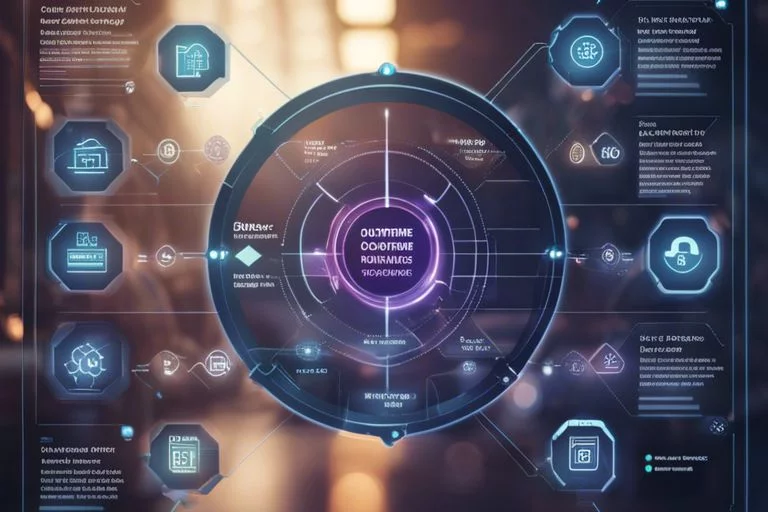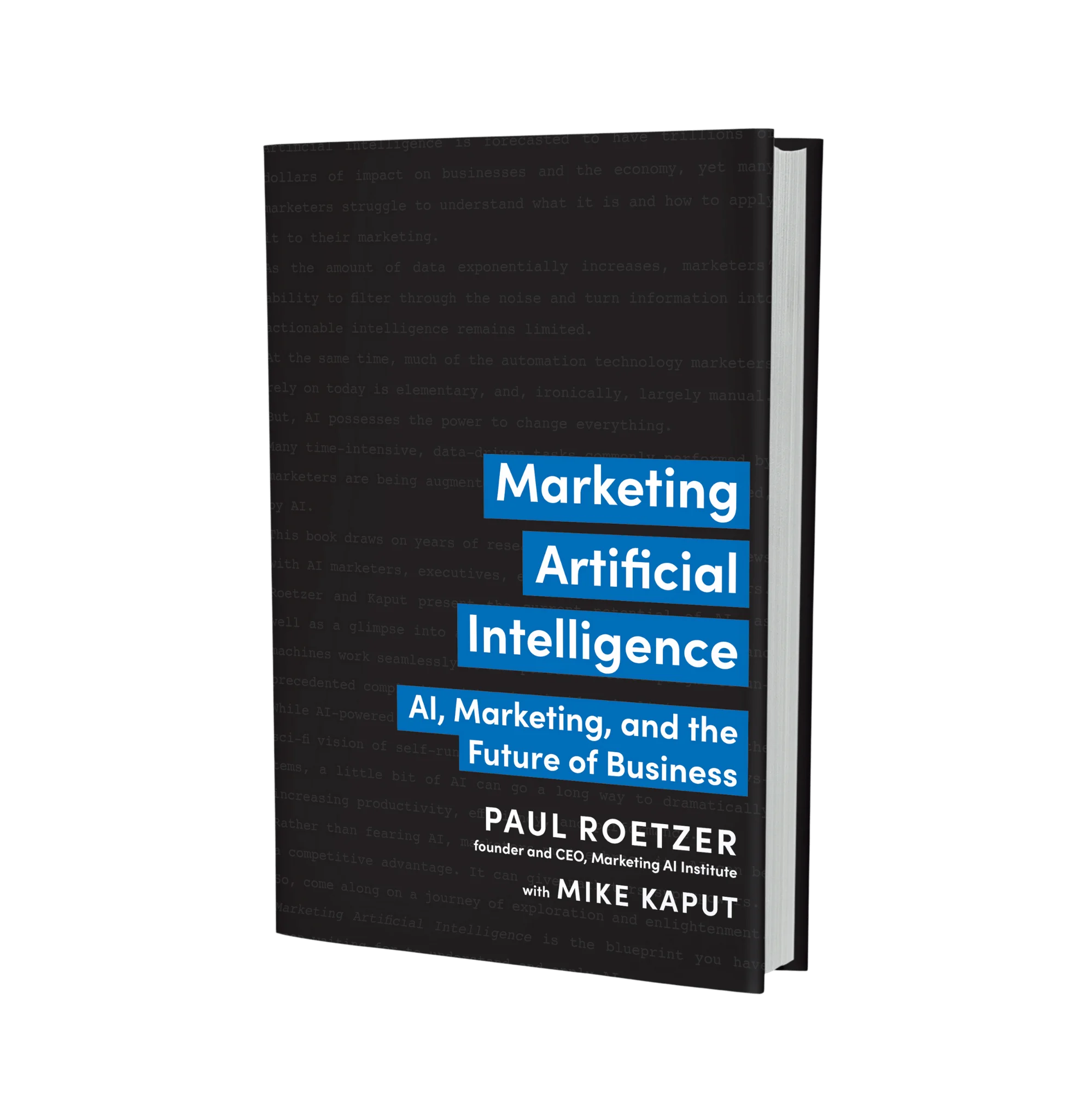Imagine a world where businesses can communicate with their customers instantly, 24/7, without the need for a large customer service team. A world where personalized recommendations and seamless interactions are the norm. This is the future of digital marketing, and at the heart of it lies the chatbot revolution. Chatbots, powered by artificial intelligence, have the potential to transform the way businesses engage with their audience, providing efficient and personalized experiences like never before. In this article, we will explore the exciting possibilities that chatbot marketing brings to the table and how it is revolutionizing the digital marketing landscape. Get ready to witness the future unfold right before your eyes.
The Rise of Chatbots
1.1 The Definition of Chatbots
Chatbots are artificial intelligence-powered software programs that are designed to simulate conversations with humans through messaging interfaces. They use natural language processing techniques to understand and respond to user queries, providing personalized and interactive experiences. Chatbots can be integrated into various platforms such as websites, mobile apps, and social media accounts, revolutionizing the way businesses interact with their customers.
1.2 Chatbots in Customer Service
One of the primary applications of chatbots is in customer service. They offer a cost-effective and efficient way to handle customer inquiries, provide support, and resolve issues. Chatbots can handle a wide range of customer queries, such as answering frequently asked questions, providing product information, and offering troubleshooting assistance. By automating these tasks, businesses can free up their human customer service representatives to focus on more complex or sensitive customer interactions.
1.3 The Benefits of Chatbots in Marketing
Chatbots play a crucial role in digital marketing strategies. They can provide personalized customer engagement, enhance lead generation and qualification, and automate customer support and problem-solving processes. With the ability to understand user preferences and behavior, chatbots can deliver targeted marketing messages, recommend products or services, and even conduct sales transactions. By leveraging chatbot technology, businesses can streamline their marketing efforts, increase customer satisfaction, and boost conversion rates.
Chatbot Technology
2.1 Artificial Intelligence and Natural Language Processing
Chatbot technology relies heavily on artificial intelligence (AI) and natural language processing (NLP) techniques. AI enables chatbots to learn from past interactions, improve their responses, and make data-driven decisions. NLP allows them to understand and interpret human language, including slang, abbreviations, and context. With the combination of AI and NLP, chatbots can engage in more meaningful and human-like conversations with users, providing a seamless user experience.
2.2 Machine Learning and Predictive Analytics
Machine learning is a subset of AI that enables chatbots to learn and adapt from large datasets. By continuously analyzing user interactions and feedback, chatbots can improve their language understanding and response generation over time. This leads to more accurate and relevant responses, increasing user satisfaction. Predictive analytics, on the other hand, allows chatbots to anticipate user needs, recommend products or services, and personalize the user experience. These technologies empower chatbots to deliver targeted marketing messages and drive customer engagement.
2.3 Integration with Existing Systems
Chatbots can be integrated with existing systems such as customer relationship management (CRM) software, e-commerce platforms, and marketing automation tools. This integration enables businesses to streamline their operations, gather valuable customer data, and provide a unified experience across different channels. By connecting chatbots to CRM systems, businesses can track customer interactions, gather insights, and personalize their marketing efforts. Integration with e-commerce platforms allows chatbots to facilitate transactions, provide order status updates, and recommend additional products or services. Such integration enhances efficiency, improves customer experience, and maximizes the benefits of chatbot technology.

Chatbots in Digital Marketing
3.1 Personalized Customer Engagement
One of the key advantages of chatbots in digital marketing is the ability to deliver personalized customer engagement. Chatbots can analyze user data, preferences, and behavior patterns to create tailored marketing messages, recommendations, and offers. By providing personalized experiences, businesses can enhance customer satisfaction, increase conversion rates, and build brand loyalty. Chatbots can engage in personalized conversations, remembering past interactions and preferences, and providing relevant information or suggestions. This level of personalization creates a sense of connection and strengthens the bond between the customer and the brand.
3.2 Enhanced Lead Generation and Qualification
Chatbots can play a vital role in lead generation and qualification. By engaging with website visitors or social media users, chatbots can capture leads, ask qualifying questions, and gather valuable customer information. This information can then be used to segment leads, nurture them through personalized messages, and prioritize them based on their readiness to purchase. Chatbots can also automate lead qualification processes by analyzing user interactions and identifying high-quality leads. This increases efficiency, saves time for marketing professionals, and ensures that the sales team focuses on the most promising leads.
3.3 Automated Customer Support and Problem Solving
Chatbots excel in automating customer support and problem-solving processes. They can handle a wide range of customer inquiries, issues, and requests, providing quick and accurate solutions. Chatbots can guide customers through troubleshooting steps, offer self-service options, and escalate complex issues to human agents when necessary. By automating these processes, businesses can provide round-the-clock support, reduce response times, and improve customer satisfaction. Additionally, chatbots can collect valuable feedback from customers, helping businesses identify areas for improvement and enhance their products or services.
Improving User Experience
4.1 Conversational Interfaces
Chatbots offer conversational interfaces that simulate real-life conversations and make interactions more engaging and natural. Users can communicate with chatbots using natural language, as if they were chatting with a friend or a customer service representative. This conversational approach eliminates the need for complex user interfaces or navigation menus, simplifying the user experience. Conversational interfaces make it easier for users to find information, make purchases, or get support, leading to higher engagement and customer satisfaction.
4.2 24/7 Customer Service
Traditional customer service operations have limitations, such as limited working hours or availability of human agents. However, chatbots can provide 24/7 customer service, eliminating the frustration of waiting for assistance. Users can interact with chatbots at any time, receiving instant responses and solutions. This availability ensures that customers receive prompt support and can resolve their issues without delay. Around-the-clock customer service enhances the user experience, fosters customer loyalty, and boosts brand reputation.
4.3 Proactive Engagement
Chatbots have the capability to initiate conversations with users, rather than waiting for the user to reach out. This proactive engagement can be based on triggers such as user behavior, website browsing patterns, or previous interactions. By proactively engaging users, chatbots can offer assistance, provide recommendations, or notify them about new offers or updates. This proactive approach increases user engagement, drives conversions, and creates a personalized experience. Proactive chatbot engagement also allows businesses to stay top-of-mind for their customers and build stronger relationships.

Data Analysis and Decision Making
5.1 Real-time Data Collection
Chatbots collect a vast amount of data during interactions with users. This data includes user preferences, behavior, demographics, and feedback. By analyzing this real-time data, businesses can gain valuable insights into customer needs, preferences, and pain points. Real-time data collection allows businesses to adapt their marketing strategies, optimize their campaigns, and tailor their offerings. It provides a deeper understanding of customer behavior, enabling businesses to make data-driven decisions and stay ahead of the competition.
5.2 Customer Behavior Insights
The analysis of chatbot data provides valuable customer behavior insights. By understanding how users interact with chatbots, businesses can identify patterns, trends, and customer preferences. Insights into customer behavior enable businesses to segment their audience, personalize their marketing messages, and deliver targeted offers. Businesses can identify pain points in the customer journey and take proactive measures to improve the user experience. Customer behavior insights obtained from chatbot interactions provide a comprehensive view of the customer journey, allowing businesses to optimize their marketing efforts and drive better results.
5.3 Marketing Strategy Optimization
Chatbots contribute to optimizing marketing strategies by providing valuable data and insights. By tracking user interactions, preferences, and responses, businesses can measure the effectiveness of their marketing campaigns. Chatbot data allows businesses to identify which marketing messages, offers, or channels drive the highest engagement and conversions. This information enables businesses to refine their marketing strategies, allocate resources effectively, and focus on the most effective tactics. Chatbot-driven data analysis empowers businesses to continuously optimize their marketing efforts, ensuring maximum ROI and driving business growth.
Chatbot Challenges and Limitations
6.1 Complexity and Cost
Implementing chatbots and integrating them with existing systems can be a complex and costly process. Developing a chatbot requires expertise in AI, NLP, and software development. Businesses need to invest in the right talent, tools, and infrastructure to build and maintain an effective chatbot. Additionally, integrating chatbots with existing systems, such as CRM software or e-commerce platforms, can require significant effort and resources. The complexity and cost associated with chatbot implementation are important considerations for businesses before opting for this technology.
6.2 Maintaining Brand Voice and Tone
Chatbots need to reflect the brand voice and tone to ensure a consistent user experience. However, maintaining brand consistency can be challenging for chatbots, as they rely on AI algorithms for generating responses. Businesses must invest time and effort in training chatbots to understand the nuances of their brand’s voice and tone. This includes providing specific guidelines and continuously monitoring the chatbot’s responses to ensure they align with the brand’s values and messaging. Maintaining brand voice and tone in chatbot interactions is crucial to reinforce brand identity and communication.
6.3 Limited Human Emotion Recognition
Chatbots have limitations when it comes to recognizing and responding to human emotions. While they can understand and respond to text-based queries, they struggle to interpret emotions or complex sentiments. Human agents are often better equipped to empathize, understand subtle cues, and provide appropriate emotional responses. Recognizing and responding to human emotions is crucial in customer service, where empathy and emotional support are essential. Therefore, businesses must strike a balance between using chatbots for efficiency and human agents for emotional intelligence.

The Future of Chatbot Marketing
7.1 Advanced AI Capabilities
The future of chatbot marketing lies in the advancement of AI capabilities. As AI technologies continue to evolve, chatbots will become even more intelligent, human-like, and capable of complex responses. Advanced AI algorithms will allow chatbots to understand emotions, detect sarcasm, and adapt their responses accordingly. This will result in more engaging and personalized interactions, further enhancing the user experience. The continuous improvement and refinement of AI capabilities will drive the adoption and effectiveness of chatbot marketing in the future.
7.2 Integration with Voice Assistants
Integration with voice assistants, such as Amazon Alexa or Google Assistant, will be a significant development in chatbot marketing. Voice assistants provide a hands-free and intuitive way for users to interact with chatbots. Through voice commands, users can ask questions, get recommendations, and make purchases. This integration will expand the reach of chatbot marketing, as it enables users to engage with chatbots while multitasking or in situations where typing is inconvenient. The integration of chatbots with voice assistants will revolutionize the way users interact with brands and open up new opportunities for personalized marketing experiences.
7.3 Personalized Chatbot Experiences
The future of chatbot marketing will focus on delivering highly personalized experiences to users. Chatbots will leverage advanced AI algorithms and predictive analytics to understand user preferences, behavior history, and context. With this knowledge, chatbots will be able to tailor their responses, recommendations, and marketing messages to each individual user. Personalized chatbot experiences will create stronger connections with customers, foster loyalty, and increase customer lifetime value. Businesses will need to invest in developing advanced personalization capabilities in their chatbots to stay competitive in the evolving digital landscape.
Ethical Considerations
8.1 Ensuring Privacy and Security
As chatbots collect and process user data, ensuring privacy and security becomes paramount. Businesses must implement robust security measures, such as data encryption, secure data storage, and access controls. They should also be transparent about the data collection and usage practices of their chatbots. Obtaining user consent and providing clear privacy policies are essential in building trust and maintaining ethical standards. By prioritizing privacy and security, businesses can protect user information and ensure that chatbot interactions are conducted in a responsible and ethical manner.
8.2 Transparency and Trust
Transparency is crucial in chatbot marketing to establish trust with users. Businesses should clearly communicate that users are interacting with a chatbot, not a human, right from the beginning of the conversation. Chatbots should identify themselves as such and provide information on their capabilities and limitations. Users should be informed about how their data is used and have control over their information. Transparency builds trust, increases user confidence, and ensures ethical practices in chatbot marketing.
8.3 Bias and Discrimination
Chatbots can inadvertently exhibit bias or discrimination based on the data they are trained on. This can occur if the training data contains biased or discriminatory language or if the algorithms have inherent biases. Businesses must strive for fairness and avoid perpetuating biases through their chatbots. Regular monitoring and audits of chatbot responses can help identify and rectify any biases or discriminatory behavior. Ethical considerations in chatbot marketing demand that businesses proactively address bias and discrimination to ensure fairness and equal treatment for all users.

The Role of Chatbot Marketing Professionals
9.1 Skills and Expertise
Chatbot marketing professionals play a crucial role in leveraging chatbot technology effectively. They need a combination of technical expertise and marketing knowledge to build and optimize chatbots. Proficiency in AI, NLP, machine learning, and data analysis is essential to develop intelligent chatbot capabilities. Additionally, a deep understanding of marketing strategies, customer engagement, and user experience is necessary to ensure that chatbots align with business goals and brand identity. Chatbot marketing professionals bridge the gap between technology and marketing, making chatbots a valuable asset in digital marketing campaigns.
9.2 Continuous Learning and Adaptation
Given the rapid advancements in chatbot technology and the evolving digital landscape, chatbot marketing professionals must embrace continuous learning and adaptation. Staying updated with the latest AI advancements, chatbot platforms, and industry trends is crucial in maintaining a competitive edge. Continuous learning enables professionals to explore new features, techniques, and strategies to optimize chatbot performance. This adaptability allows businesses to leverage the full potential of chatbot marketing and stay ahead in the dynamic digital marketing landscape.
9.3 Human Oversight and Intervention
While chatbots automate and streamline many marketing processes, human oversight and intervention are still essential. Chatbot marketing professionals need to monitor chatbot interactions, analyze data, and ensure that chatbot responses align with marketing objectives and brand guidelines. Human agents should be readily available to step in when chatbots encounter complex issues, sensitive inquiries, or emotional situations that require a human touch. The role of human oversight and intervention maintains the quality of chatbot interactions, prevents misunderstandings, and safeguards brand reputation.
Conclusion
10.1 Embracing the Chatbot Revolution
As chatbot technology continues to advance, businesses have the opportunity to revolutionize their digital marketing strategies. Chatbots offer personalized customer engagement, enhanced lead generation, automated customer support, and valuable data analysis capabilities. By leveraging AI, NLP, and machine learning, businesses can provide seamless and intuitive user experiences, optimize marketing efforts, and boost customer satisfaction. Embracing the chatbot revolution empowers businesses to drive growth, enhance customer relationships, and stay ahead in the ever-evolving digital marketing landscape.
10.2 The Road Ahead
The road ahead for chatbot marketing holds immense potential. Advanced AI capabilities, integration with voice assistants, and personalized chatbot experiences will shape the future of digital marketing. However, businesses must also address ethical considerations, ensure privacy and security, promote transparency and trust, and mitigate biases and discrimination. By investing in skilled chatbot marketing professionals, continuous learning, and human oversight, businesses can navigate the road ahead with confidence and unlock the full potential of chatbot marketing. The chatbot revolution is here to stay, and embracing it will be instrumental in driving success in the digital age.
















